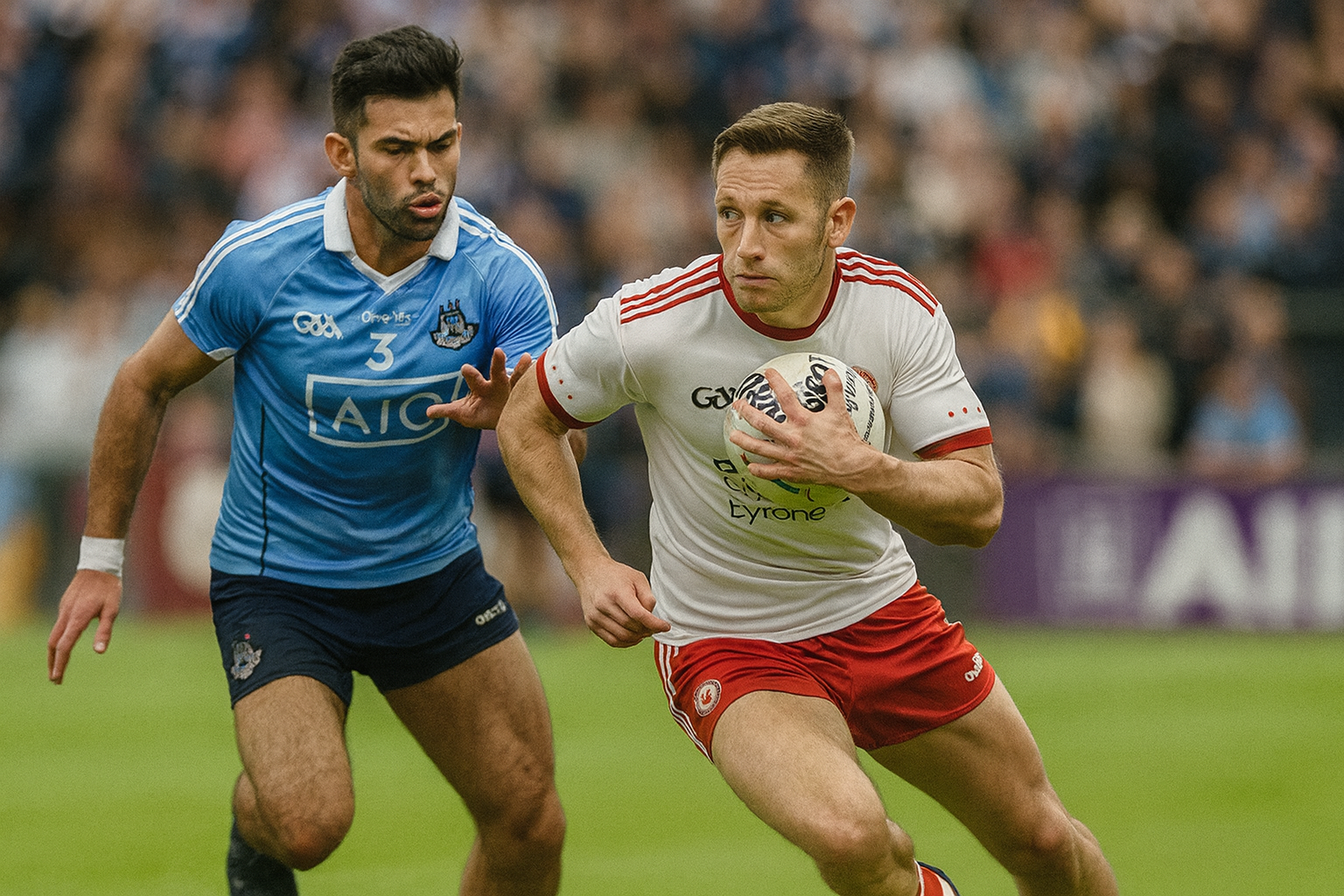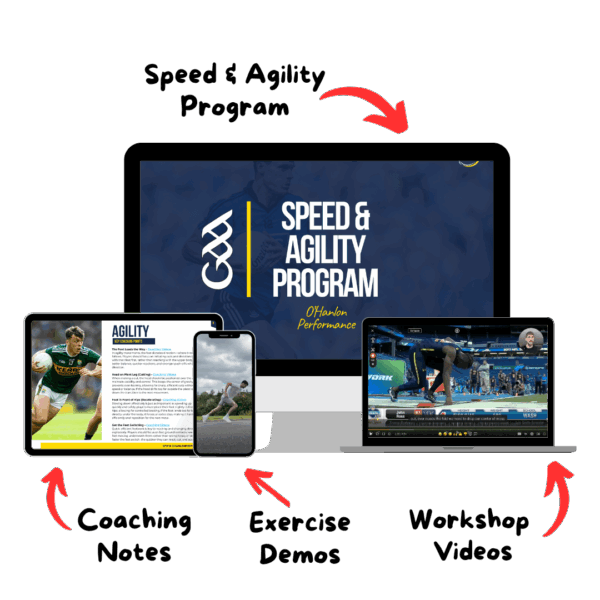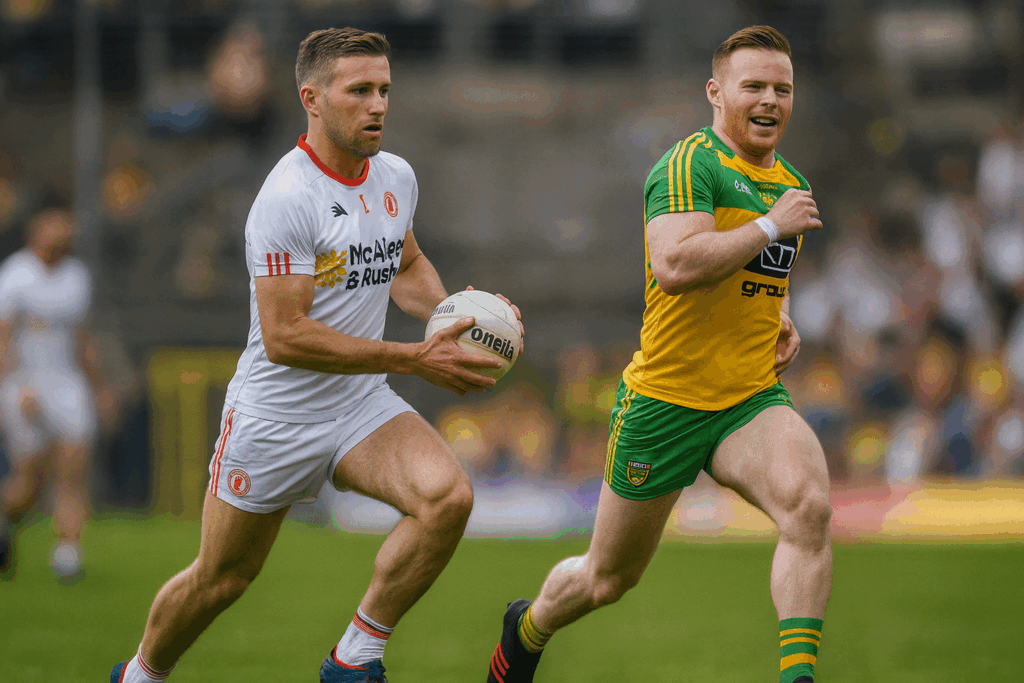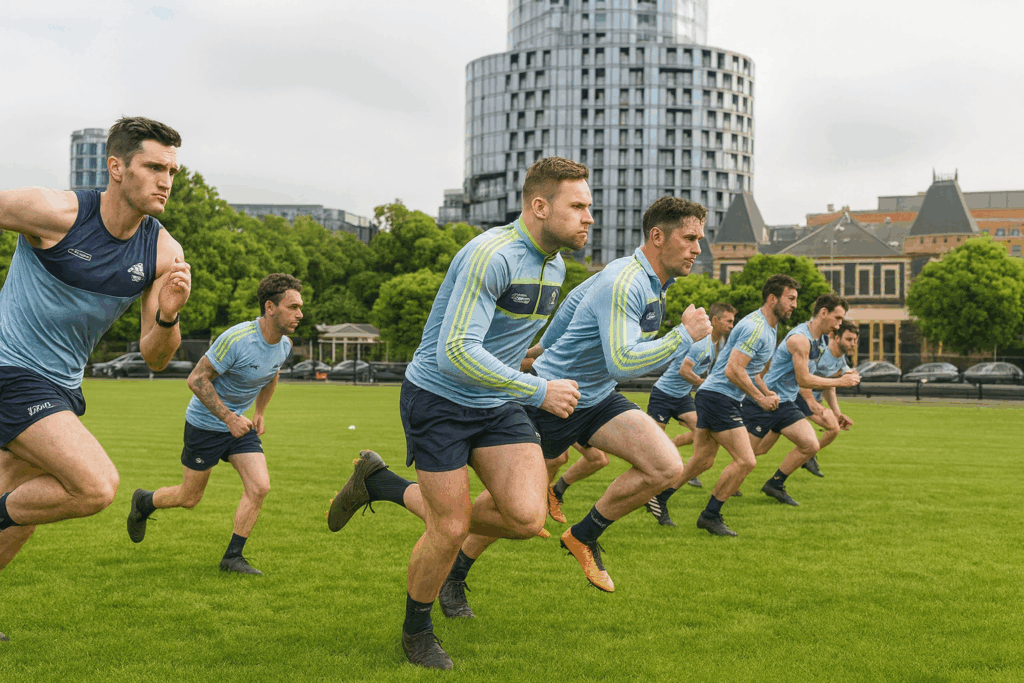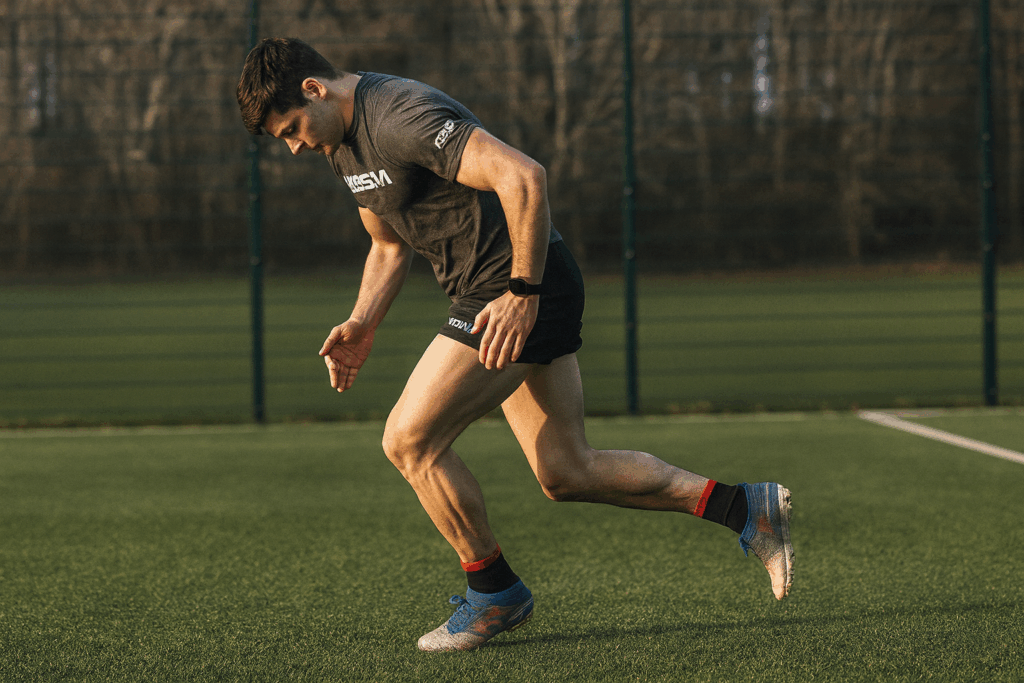Introduction
Speed is one of the most decisive factors in Gaelic games, influencing every critical moment on the pitch. Whether it’s a forward breaking through a defensive line, a defender recovering to close down an opponent, or a midfielder transitioning during high-intensity gameplay, speed is essential. This comprehensive speed training for GAA guide equips GAA coaches with evidence-based tools and strategies to develop speed across all positions. Designed for practicality and adaptability, it provides clear training methodologies, actionable drills, and progress-tracking techniques.
By the end of this speed training for GAA guide, you will:
- Understand the importance of speed in GAA performance.
- Be equipped to design speed training programs tailored to individual and team needs.
- Implement effective drills that improve acceleration, max velocity, and agility.
The Importance of Speed in GAA
Speed is crucial in GAA because:
- Acceleration allows players to break tackles, close gaps, and gain positional advantage.
- Max velocity aids in chasing down opponents or covering ground during transitions.
- Change of direction (COD) supports defensive recovery and attacking dynamism.
Faster players contribute to both offensive breakthroughs and defensive stability, making speed training an essential component of every coach’s program.
Example: Consider a half-forward breaking into space for a scoring opportunity. The ability to accelerate quickly and change direction sharply often determines whether they succeed in creating a scoring chance or are intercepted by a defender.
Key Speed Metrics and Characteristics by Position
The performance characteristics of GAA players vary by position. Below is a breakdown of key speed metrics:
| Position | 5m Sprint (s) | 10m Sprint (s) | 20m Sprint (s) |
|---|---|---|---|
| Goalkeeper | 1.10 ± 0.08 | 1.82 ± 0.11 | 3.07 ± 0.10 |
| Full Back | 1.09 ± 0.08 | 1.82 ± 0.06 | 3.08 ± 0.11 |
| Half Back | 1.08 ± 0.08 | 1.80 ± 0.06 | 3.06 ± 0.12 |
| Midfield | 1.10 ± 0.07 | 1.84 ± 0.08 | 3.12 ± 0.10 |
| Half Forward | 1.07 ± 0.09 | 1.80 ± 0.07 | 3.09 ± 0.14 |
| Full Forward | 1.09 ± 0.09 | 1.82 ± 0.08 | 3.10 ± 0.11 |
Foundations of Speed Training
Sprinting Mechanics
Effective speed training starts with understanding sprint mechanics. The sprinting process is divided into three phases:
- Acceleration:
- Emphasizes explosive starts with a forward lean and aggressive arm drive.
- Key for short bursts, such as breaking through defensive lines or recovering to defend.
- Maximum Velocity:
- Focuses on upright running posture, minimal ground contact time, and high knee drive.
- Essential for sustained runs over longer distances, typical for midfielders.
- Change of Direction (COD):
- Requires stability, deceleration, and rapid reacceleration.
- Critical for defenders and half-backs pivoting to intercept or attack.
Example: A defender tracking a forward must quickly decelerate and reaccelerate to close down space, highlighting the importance of COD mechanics.
Posture, Rhythm, and Relaxation (PRR)
These principles underpin efficient sprinting:
- Posture: Forward lean during acceleration, upright alignment at top speed.
- Rhythm: Consistent stride patterns for efficient movement.
- Relaxation: Reducing tension in the upper body to conserve energy.
Tip for Coaches: Use real-time feedback to correct posture, such as “Keep your shoulders relaxed” or “Drive your knees forward.”
Neuromuscular Adaptations
Speed training develops the nervous system’s ability to recruit fast-twitch muscle fibers efficiently. Exercises like resisted sprints and plyometrics improve neuromuscular activation, leading to faster, more explosive movements.
Consideration: Younger athletes may require more time to develop neuromuscular efficiency. Adjust drills and intensity based on their training age.
GAA Speed & Agility Program I
Become faster, sharper, and more explosive on the pitch where it counts.
✅ Two Speed & Agility Sessions
✅ Coaching Workshop Videos
✅ Exercise Demo Videos
Built for GAA. Designed for results.
Key Speed Drills for GAA Players
Acceleration Drills
- Sled Sprints: Use light resistance (10-20% body weight) to reinforce force application.
- Hill Sprints: Build explosive power in the lower body.
- Positional Drills: Focus on shin angles, knee drive, and alignment.
Max Velocity Drills
- Flying Sprints: Gradually build to max speed and hold for 20 meters.
- Wicket Drills: Improve stride length and rhythm with low hurdles.
Change of Direction Drills
- Reactive COD Drills: Use partner cues or agility lights to mimic match scenarios.
- T-Drill: Develop lateral agility and quick reacceleration.
Additional Tip: Coaches can incorporate ball work into COD drills to increase match relevance.
Progressive Speed Training Plan
Phased Approach
| Phase | Focus | Key Drills |
|---|---|---|
| Off-Season | Build acceleration and strength | Sled sprints, resisted runs |
| Pre-Season | Integrate speed and agility | Flying sprints, reactive COD drills |
| In-Season | Maintain speed, minimize fatigue | Wicket drills, game-specific sprint scenarios |
Volume/Intensity Recommendation: Begin with 3-4 sprints per drill in the off-season and progress to 5-6 as athletes adapt.
Position-Specific Training Recommendations
| Position | Focus | Key Drills |
|---|---|---|
| Goalkeepers | Quick reactions, short bursts | Wall drills, 5m sprints |
| Full Backs | Acceleration and sustained speed | 10m sprints, T-drills |
| Half Backs | Balanced speed and agility | 20m sprints, reactive agility drills |
| Midfielders | Speed endurance and max velocity | Flying sprints, speed-endurance intervals |
| Half Forwards | Explosive acceleration for attacks | 5m/10m sprints, reactive COD drills |
| Full Forwards | Acceleration with agility | Resisted sprints, small-sided sprint games |
Monitoring and Progress Tracking
- Sprint Timing:
- Use GPS trackers or timing gates for 5m, 10m, and 20m sprints.
- Video Analysis:
- Assess sprint mechanics, stride length, and ground contact.
- Benchmarks:
- Track individual progress using position-specific norms.
Example: Set benchmarks such as a 5% improvement in sprint times over 8 weeks.
Recovery and Injury Prevention
- Strengthen Key Areas:
- Hamstrings, glutes, and calves to reduce injury risk.
- Monitor Load:
- Avoid overloading players, especially during in-season training.
- Active Recovery:
- Use light aerobic exercises and stretching post-session.
Recovery Tip: Incorporate foam rolling to enhance blood flow and reduce soreness.
Game-Specific Speed Training
- Small-Sided Games with Speed Zones:
- Create zones where players must sprint at max effort during play.
- Reactive Sprinting with Ball Work:
- Combine sprinting with ball handling to replicate match scenarios.
Additional Drill: Use a “chase the attacker” drill to simulate real-game recovery situations.
Conclusion
Speed is a vital component of GAA performance, influencing every role on the pitch. By applying evidence-based methods, tailoring drills to specific positions, and tracking progress effectively, coaches can build faster, more agile teams. Use this speed training for GAA guide to structure impactful speed training sessions and ensure your players are prepared for the demands of the game.

